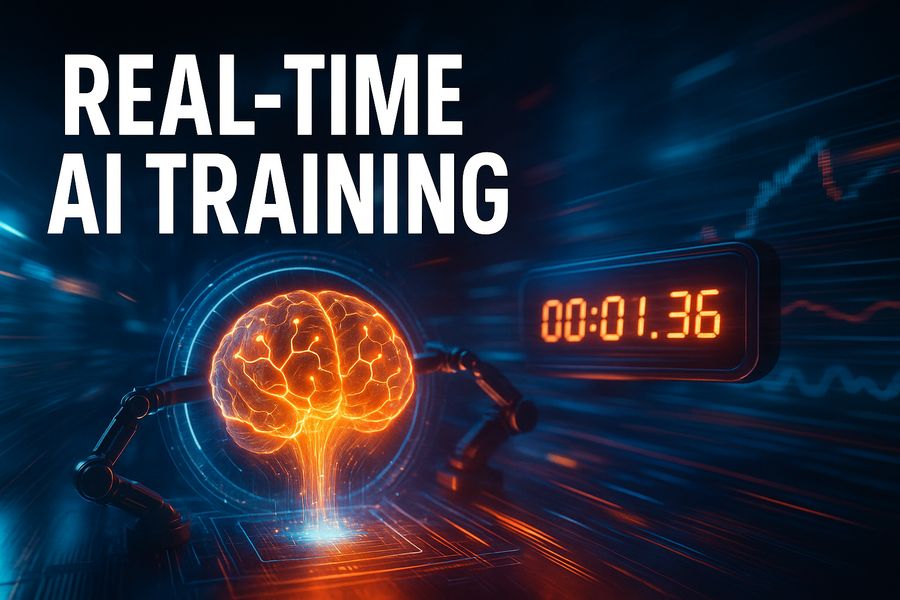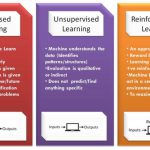Artificial Intelligence (AI) has become a powerful driver of innovation, but its true potential often shines when it’s able to respond instantly. Whether you’re using a virtual assistant, detecting fraud, or navigating with a self-driving car, real-time AI is the magic behind the scenes. ⏱️💡
But delivering AI at such high speeds isn’t easy. Training models for real-time applications comes with unique challenges that go far beyond standard AI tasks. In this article, we’ll explore the core obstacles and how researchers and engineers are overcoming them to create intelligent systems that think and act on the fly. 🚗💬🔍
🧠 What Is Real-Time AI?
Real-time AI refers to systems that:
-
Process and analyze input immediately or within milliseconds.
-
Make predictions or decisions without noticeable delay.
-
Operate continuously, often with streaming data.
🎯 Examples of Real-Time AI Applications:
-
Voice assistants like Siri or Alexa 🗣️
-
Autonomous vehicles 🚘
-
Live language translation 🌐
-
Fraud detection in financial systems 💳
-
Industrial automation and robotics 🤖
These applications demand fast, accurate, and reliable AI models that can perform under strict latency and performance constraints.
⛔ Key Challenges in Training Real-Time AI
While the goals are ambitious, several roadblocks stand in the way of effective real-time AI deployment.
1️⃣ Low Latency Requirements
Real-time applications often require responses in under 100 milliseconds.
🔧 Why it’s hard:
-
Traditional deep learning models are computationally heavy.
-
Latency can increase with model size and complexity.
-
Network delays add further latency in cloud-based setups.
📉 Even a few milliseconds of delay can mean a missed fraud alert or a dangerous mistake in autonomous navigation.
2️⃣ Resource Constraints on Edge Devices
Many real-time systems operate on edge devices like smartphones, IoT sensors, or embedded systems — which have:
-
Limited memory 💾
-
Restricted processing power 🧮
-
Low energy availability 🔋
This makes deploying large models directly on these devices extremely challenging.
3️⃣ Handling Streaming Data
Unlike static datasets, real-time systems must process constant data streams (e.g., sensor readings, chat messages, financial transactions).
🔄 This introduces challenges like:
-
Data drift over time 📈
-
Need for continuous learning 🧠
-
Time synchronization issues across devices ⏱️
4️⃣ Real-Time Feedback Loops and Retraining
In dynamic environments, models may need constant updates based on new data — which is difficult without retraining pipelines that support fast iterations.
🚨 Example: A fraud detection model must adapt to new fraudulent patterns as they emerge, often within minutes or hours.
5️⃣ Reliability and Safety Concerns
Real-time AI often powers mission-critical systems, so:
-
Errors can lead to financial loss or safety hazards.
-
Models must be robust against noise, unexpected inputs, or adversarial attacks.
🛡️ Building trust in real-time AI is as important as speed.
✅ Solutions and Best Practices
Despite the hurdles, many innovative techniques and tools have emerged to make real-time AI not only possible but increasingly reliable and scalable.
💡 Solution 1: Model Optimization Techniques
To meet latency requirements, models are compressed and accelerated.
Techniques Include:
-
Quantization: Reducing the precision of numbers used in computations (e.g., using int8 instead of float32).
-
Pruning: Removing redundant or less important model weights.
-
Knowledge Distillation: Training smaller “student” models to mimic larger ones.
-
TensorRT, ONNX Runtime, and Core ML: Frameworks that optimize inference for edge and real-time usage.
🏎️ These methods drastically reduce inference time and model size without large losses in accuracy.
⚙️ Solution 2: Lightweight and Specialized Models
Rather than using a large general-purpose model, real-time AI often benefits from:
-
Lightweight architectures like MobileNet, SqueezeNet, or TinyBERT.
-
Task-specific models that are optimized only for required functionality.
🔋 This is especially useful for mobile apps and IoT devices with limited compute power.
🌐 Solution 3: Edge and Hybrid AI Architectures
To minimize network latency and improve reliability:
-
Edge AI processes data locally on the device.
-
Hybrid AI balances load between edge and cloud.
📲 For example, a voice assistant might process a wake word locally, then query the cloud for full language understanding.
🧠 This improves speed, privacy, and availability.
🧪 Solution 4: Continuous Learning and Model Updates
To keep up with data drift and evolving environments:
-
Implement online learning systems that update in real-time.
-
Use automated model retraining pipelines triggered by data changes or performance drops.
-
Employ replay buffers or rolling windows for dynamic training datasets.
🔁 Feedback loops ensure models remain accurate and relevant over time.
🔐 Solution 5: Testing, Monitoring, and Fail-Safes
Deploying a real-time AI model isn’t the end — it’s the beginning of constant monitoring.
👁️🗨️ Best practices include:
-
A/B testing different model versions.
-
Performance monitoring with tools like Grafana or Prometheus.
-
Fallback mechanisms (e.g., rule-based backups) when models fail or return uncertain results.
✅ This adds robustness and transparency to AI systems operating under real-time constraints.
🔮 What’s Next for Real-Time AI?
The future of real-time AI will see further evolution through:
-
Neuromorphic computing: AI chips that mimic human brain efficiency 🧠
-
Federated learning: Training on-device using decentralized data 📱
-
Adaptive systems that self-tune based on feedback 🛠️
-
Multimodal real-time AI, combining vision, sound, and language in milliseconds 🎥🎤📝
As more systems become intelligent, real-time AI will be at the heart of immersive, responsive technologies.
🏁 Final Thoughts
Training AI for real-time applications involves striking a delicate balance between:
-
Speed ⚡
-
Accuracy ✅
-
Efficiency 💾
-
Safety 🛡️
From smart assistants to safety-critical systems, real-time AI is transforming the way machines interact with the world. As the demand grows, so does the innovation — ensuring that AI not only thinks fast, but thinks smart.
💬 Real-time AI isn’t just about milliseconds — it’s about delivering value, insight, and intelligence at the speed of life.


